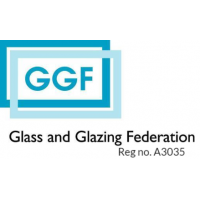If you are in the process of choosing some improvements to your home or other buildings, rooflights by Natralight might be the perfect option. With more than 30 years of experience when it comes to structural glazing, we can create some truly stunning rooflights with practical features.
What Rooflight Types Do You Supply?
Our range includes off the shelf options, as well as completely bespoke units. The main rooflight types we supply are:
• Sliding rooflights – Our sliding rooflights feature a side opening mechanism for maximum ventilation as well as letting in natural light.
• Frameless glass rooflights – Frameless glass rooflights use the latest in rooflight technology: glass to glass joints.
• Glass lean to roof installations – Ideal for connecting different areas of your property in a glass link style, or for creating extra interior space.
• Structural glass roof installations - An impressive option for buildings pf all kinds, creating a dramatic look internally and externally.
Do I Need Planning Permission for Rooflights?
Planning permission is not normally needed for rooflights or re-roofing your home as Permitted Development rules allow for roof alterations.
There are some limits and conditions, including no alteration should project more than 150mm from the existing roof plane or be higher than the highest part of your roof. For side-facing windows they require obscured glazing and any opening has to be 1.7m above the floor.
Some local authorities have different rules regarding Planning Permission on what is possible, with regards to rooflight installations. This is the reason why you should always consult your architect or an expert such as Natralight about this matter.
Is My Roof Suitable for Rooflights?
Our rooflights can be installed in all kinds of roofs, but some are better suited to certain roof types than others. The best way to know whether sliding rooflights, frameless glass rooflights, or structural glass roof and structural glass roof installations are going to be best for your property is to get in touch with us. Our experts are always more than happy to discuss your options and help come up with the perfect design.
Having an in house design team lets us match your rooflights to your building perfectly. Some of the roof types we regularly work with include:
• Gabled or pitched roofs
• Flat roofs and roof terraces
• Dormer
• M-shaped roofs
• Pyramid
Of course, there are more unusual roof types out there which are just perfect for rooflight installations. If your roof is one of these more unusual varieties, get in touch to discuss your requirements with us.
Are Rooflights Difficult to Keep Clean?
Glazing technology is rapidly becoming more high tech, and this has led to some fantastic developments in glass care. For example, special glass coatings can be added to your rooflights which keep dirt and grime at bay. This means you can enjoy a clear view for longer! As and when needed, the rooflights can be cleaned like any regular glazing.
How do the Rooflights Operate?
While our fixed rooflights and walk on glass do not move when in situ, we offer a complete range of opening rooflights. An example would be our sliding rooflights; these feature glass panels which slide over one another to form an opening. We also design and manufacture hinged opening rooflights which open more like a traditional window.
A choice of operating mechanisms adds the finishing touch to your new installation. Manual operation is a popular option whereby the rooflights need to be opened by hand. This is convenient for rooflights within easy reach, but for more difficult to access installations we offer the option of remote controlled opening. For the ultimate in rooflight convenience, however, you can opt for our top of the range automatically opening and closing rooflights complete with rain sensors.
Do Your Rooflights Come with a Warranty?
All our rooflights come with a minimum five year warranty for your peace of mind. We are also members of several organisations such as UKAS.
What are my U Values?
U values are a calculation that are created due to the loss of heat through any building element per square meter of surface for one-degree difference between the internal and external temperatures. This calculation helps to determine the thermal performance of glazed structures.
The U values are measured in watts per square meter per kelvin (W//(M²K)). Each degree difference in temperatures between the inside and outside of the window is transmitted every square meter depending on what watts per square meter it's measured at.
What does UW Values represent?
UW values are a calculation of heat loss through glass, edges and the frame.
Do I need a heating element near the rooflight?
What is the minimum distance needed between two rooflights?
Can Water Pool on the Glass of Rooflights?
Glass is considered a rigid material and will still deflect under load, the same as all rigid materials.
The rigidity of glass deflection is dependent on the glass pane size, so the bigger the unit the less rigid it is and more deflection will occur which starts at the centre of the pane. When installed in the horizontal plane the glass will start to dip or dish in the centre with the deflection due to the self-weight of the material (sometimes referred to as the dead load) plus live loads like wind pressure or snow loads. If a liquid like water were placed upon the glass, it will fill the dish creating a pooling or ponding effect.
Flat rooflights are installed onto a kerb with at least a 5° fall, which helps shed any water that can pool on the deflecting glass. If a flat glass unit was installed at 0° pitch it would not be a detriment to the weathering or integrity of the IGU unit except water pooling on the top glass surface.
For water pooling to be eliminated entirely, the thickness of the outer skin of glass must be increased so that the deflection is reduced to almost zero. To make rooflights safer the glass is heat toughened to make it stronger. Water can also cling to a vertical pane of glass via capillary action, so water can never be completely removed by simply pitching the kerb slightly.
Can I have an unusual colour of frame for my rooflight?
Natralight provides flat glass rooflights with other RAL colour frames, however, the lead-time and costs will be higher than the standard stock options.
What is cold bridging?
Cold bridging is when condensation forms on the inside of the rooflight framework, which commonly occurs when the skylight has been installed in a high humidity room such as a bathroom or kitchen. Natralight offers rooflights with trickle vents within the kerb/upstand or manual or electric opening to help eliminate the issue.
What is Heat Soak Testing?
Heat soak testing is a process that can be carried out on the glass and involves placing glass that has already been toughened into another oven and heated to temperatures up to 290ºC, then holding it at the temperature for a pre-set period (roughly 2 hours). This is believed to reduce the risk of spontaneous failure by up to 99%.
Glass Balustrades
Do glass balustrades meet Building Regulations?
Most systems comply with current Building Regulations, but if you are unsure of specific requirements we would recommend checking with a building inspector.
What is a frameless glass balustrade?
A balustrade manufactured from a quality toughened safety glass with metal fixtures and fittings that are attached to a metal handrail.
Are frameless balustrades suitable for homes?
Yes, Natralight has rich experience working on many residential properties, flat roofs and as replacements for ageing wooden stair bannisters and rails which create a visual barrier and a decorative outside patio. Balustrades can also be used where internal levels change plus stairwells.
Frameless glass balustrades are ideal for homes plus bars, shops, restaurants and offices.
What is the best height for glass balustrades?
Building regulations state balustrades should be 900mm high on stairs and 1100mm everywhere else.
What is a structural glass balustrade?
A structural glass balustrade is based on two engineering principles; a strong base that clamps thick and strong glass panels and resists the bending moments and loads imposed on it.
BS6180 was revised in 2011, and not it is possible to choose if you do or do not want a handrail. The handrail or top section which is placed on the glass is meant to tie glasses together at the top, making the whole structure sturdier and more solid.
It must also be able to withstand the required load if one of the glass panels breaks across the gap created. If you choose not to have a handrail, laminated glass needs to be used plus glass that can have one side break with the other side still capable of withstanding the loads.
What's the difference between laminated and toughened glass?
Laminated glass is the windscreen of a car, whereas toughened glass is on the side and rear windows. Toughened glass is up to five times stronger than regular glass, which means it is more resistant to force before breaking. Toughened glass, when broken, becomes thousands of small pieces of glass that is considerably less dangerous than glass shards.
Laminated glass is ordinary glass but is two panes that are sandwiched over a plastic inner layer and if the glass breaks the plastic layer holds it together with no glass shards and the whole piece remains together even though it's broken.
Roof Lanterns
Do roof lanterns apply to any home design?
Every property is different, which is why Natralight offers bespoke rooflight designs with different sizes, light transmissions, ventilation options and shapes.
What size roof lantern is best for my home?
Every property is different, as this will depend on how the area below is used, personal preference plus the amount of natural light you want to generate.
Remember that the upstand/kerb that your roof lantern sits on needs to leave sufficient clearance all round for general maintenance of the roof itself. Typically 300mm minimum clearance is needed although you might get away with slightly less.
What is a Thermal Break?
A thermal break is a material with a low thermal conductivity that is placed between two different conductive materials. Its purpose is to reduce or prevent the flow of thermal energy.
What is the Difference Between a Roof Lantern and a Rooflight?
The main difference between a rooflight and a roof lantern is that the roof lantern is a pitched structure that sits on a flat roof, whereas a flat rooflight is fitted into the construction of your roof.
Can I Hang a Light from the Middle of a Roof Lantern?
When you have a roof lantern you can add a pendant light fitting. Please discuss this with our team when you are considering having a roof lantern installed.
Is My Roof Strong Enough for a Rooflight or Roof Lantern?
The strength of a regular house roof will not pose issues for rooflight installation but single-storey extensions with a flat roof are not designed for the weight of a roof lantern. Natralight would advise consulting a structural engineer to prepare a report which is required by the Building Control department of your Local Planning Authority.
Structural Glass
What is structural glass?
Is structural glass energy efficient?
Fire-Rated Rooflights
Is the fire-resistant glass suitable for external applications?
Are skylights suitable for use in conservation areas?
What Should I Do if there is condensation on the inside of my pane?
What is Fire-Rated Glass?
Fire-rated glass is a specialist glass that is proven to protect against fire with a degree of protection offered depending on the type of glass. Generally, the glass acts as a barrier to stop the spread of flames and smoke in the event of a fire. The degree of protection offered is given in time periods that range from 30 minutes upwards.
Can Safety Glass Withstand Fire?
Safety glass does not withstand the thermal heat produced during a fire and will not provide a sufficient fire-resistant barrier required under the regulations.
What is the Difference between Fire-Rated and Safety Glass?
Fire-rated glass stop or limits the flames, smoke and heat from a fire for a specific period of time that depends on the type of glass used plus how it is installed. Safety glass is typically laminated or toughened glass that is harder to break and does not shatter in the same way as ordinary glass. This is either due to the specific processing the glass has undertaken during manufacturing or the bonded interlayer within the glass. Please note, safety glass does not have any fire resistance.
Can Fire-Resistant Glass be Installed into Frameless Systems?
Specialist glass and glazing systems that have the appropriate fire test evidence can be installed into frameless systems. Get in touch with Natralight for more information on this.
Walk-On Glass
Glass Roofs
How Can I Get a Quote on Your Rooflights?
You can get a quote on our rooflights, discuss your requirements, or get some more general information by giving us a call, or filling in the form on our ‘Contact Us’ page. We are always on hand to offer you any help, advice and information you may need when it comes to our rooflights and structural glazing.



